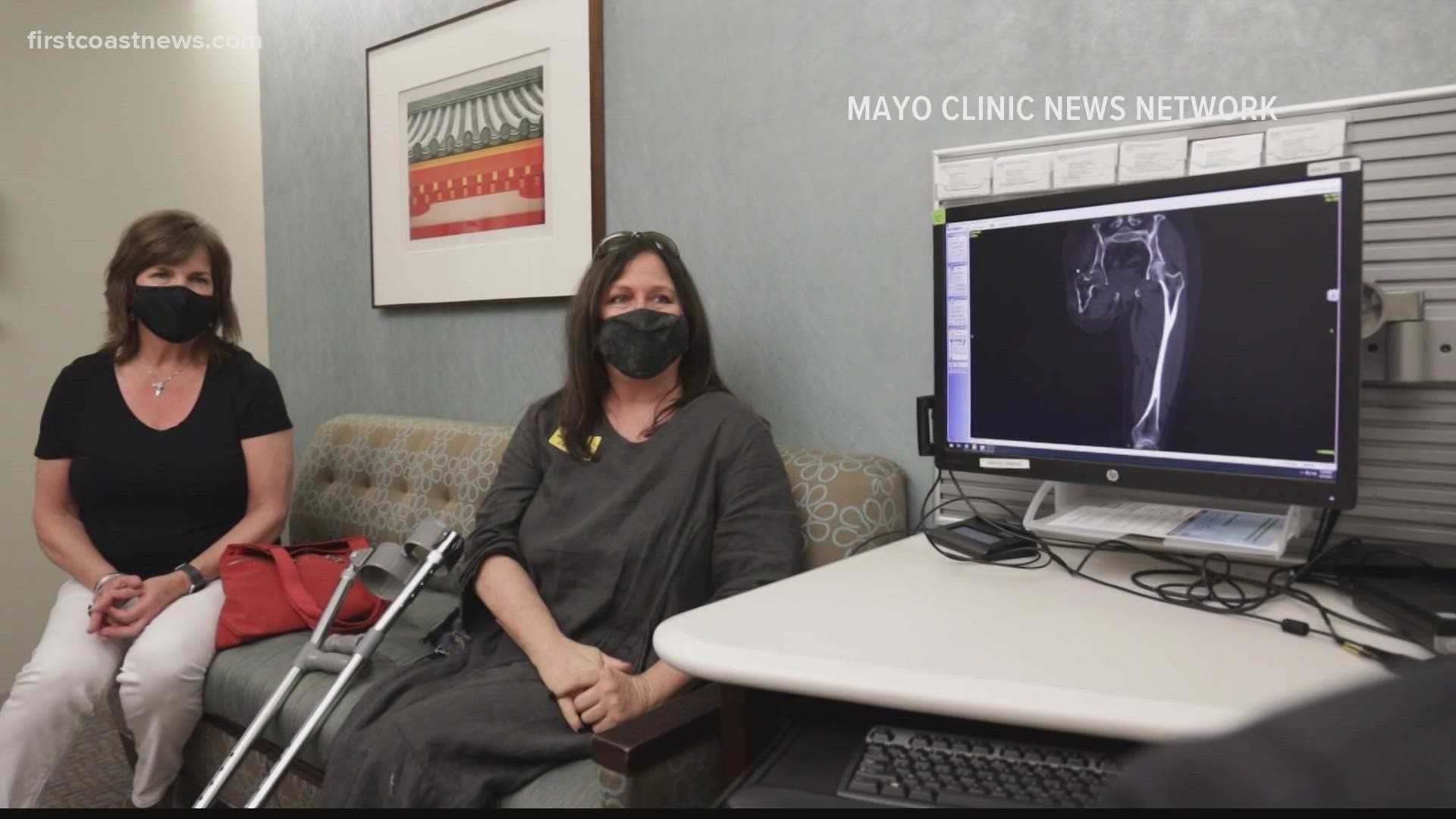JACKSONVILLE, Fla. — Nearly four decades after doctors amputated her leg, Mary Shalz is walking comfortably. She said it's the result of a new procedure at Mayo Clinic called osseointegration.
When she was 18-years-old, Shalz had bone cancer, and doctors amputated Shalz's right leg as a result. The prosthetics she had, she said, were pretty uncomfortable. Shalz rarely used them, preferring crutches.
"Over the years, they kept trying to do different fits with the socket to get it to where it could be more comfortable and it was always just tricky because of the length of my limb," she said.
"If you think about when you're going to work, you wear your dress up clothes or whatever, and then you get home and you want to take all of that off and just get comfortable. So, I would wear the leg when I had to," Shalz said.
In 2020, Shalz's prosthetist asked her if she'd be interested in being a candidate for the new procedure, osseointegration.
"With osseointegration, we're putting in an implant directly into the bone," Dr. Benjamin Wilke, an orthopedic surgeon at Mayo Clinic, said. "The bone is growing onto that implant, and then the prosthetic limb actually attaches to the implant," he said.
Last year, Dr. Wilke performed two surgeries on Shalz. In the first surgery in July of 2021, doctors put in the implant. In the second one in October of 2021, doctors attached an abutment to the implant. It's a small rod that protrudes from the limb and attaches to the prosthetic.
Shalz was the first patient at Mayo to undergo the procedure.
“It has been really exciting. You feel like, 'oh, I got picked for this.' Then it’s a little bit scary being first because, you know, there aren’t other people out there, but yet there are because we have the patients through Walter Reed," she said.
Several patients at Walter Reed National Military Medical Center in Maryland have undergone the procedure. Shalz said her doctor and physical therapist visited the hospital to learn more about the procedure before Shalz underwent the procedure.
“Now, without having a socket, I won’t have any of that rubbing. It won’t sweat and fall off, so, I mean, I will just kind of head off and go for a walk and not wonder where can I dash in [and take it off]," Shalz said.
For now, Shalz wears the new prosthetic a couple of hours a day around the house. She goes to physical therapy two to three times a week.
"It's slow, but I knew from the beginning it was going to be this long process, so that part hasn't bothered me because I know it's happening. I know it's going to happen, so it's exciting," Shalz said.
"It will just be, just a whole freedom of walking wherever I want to walk," she said.

